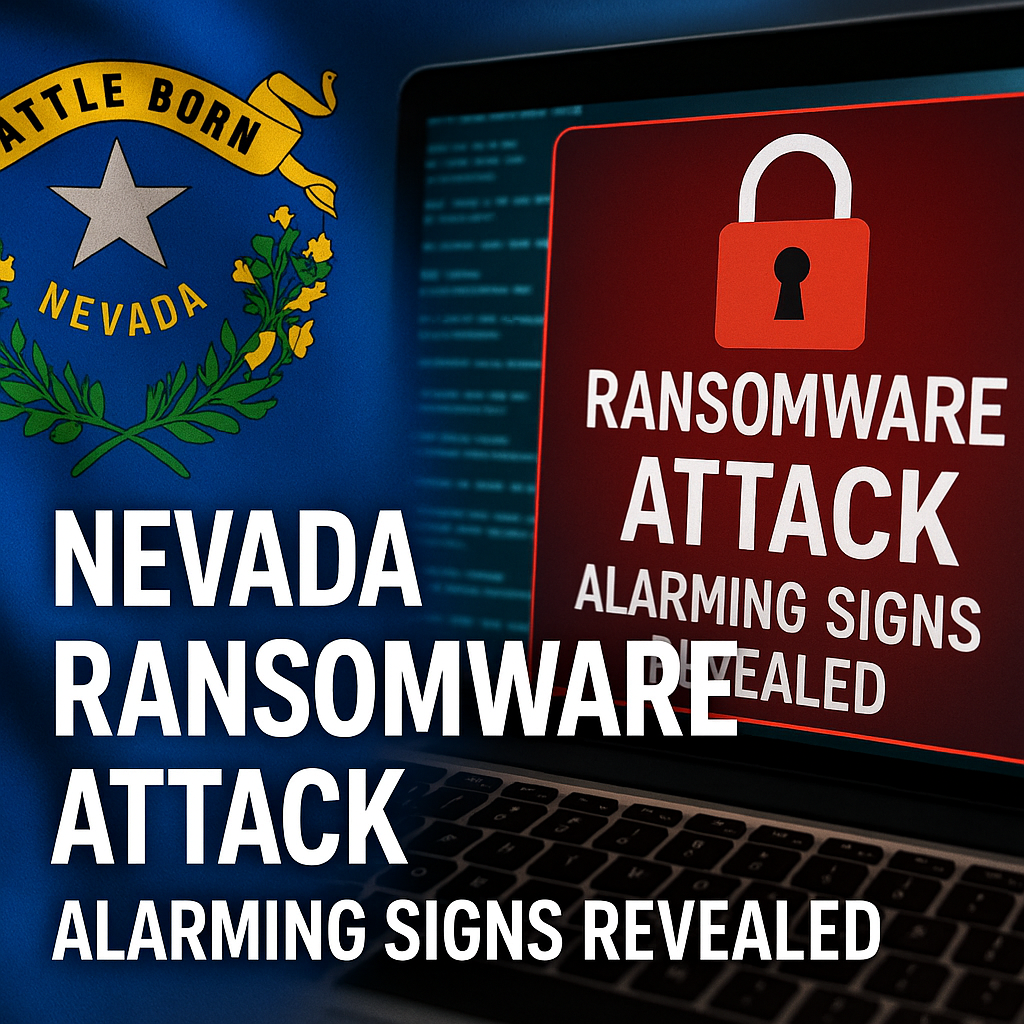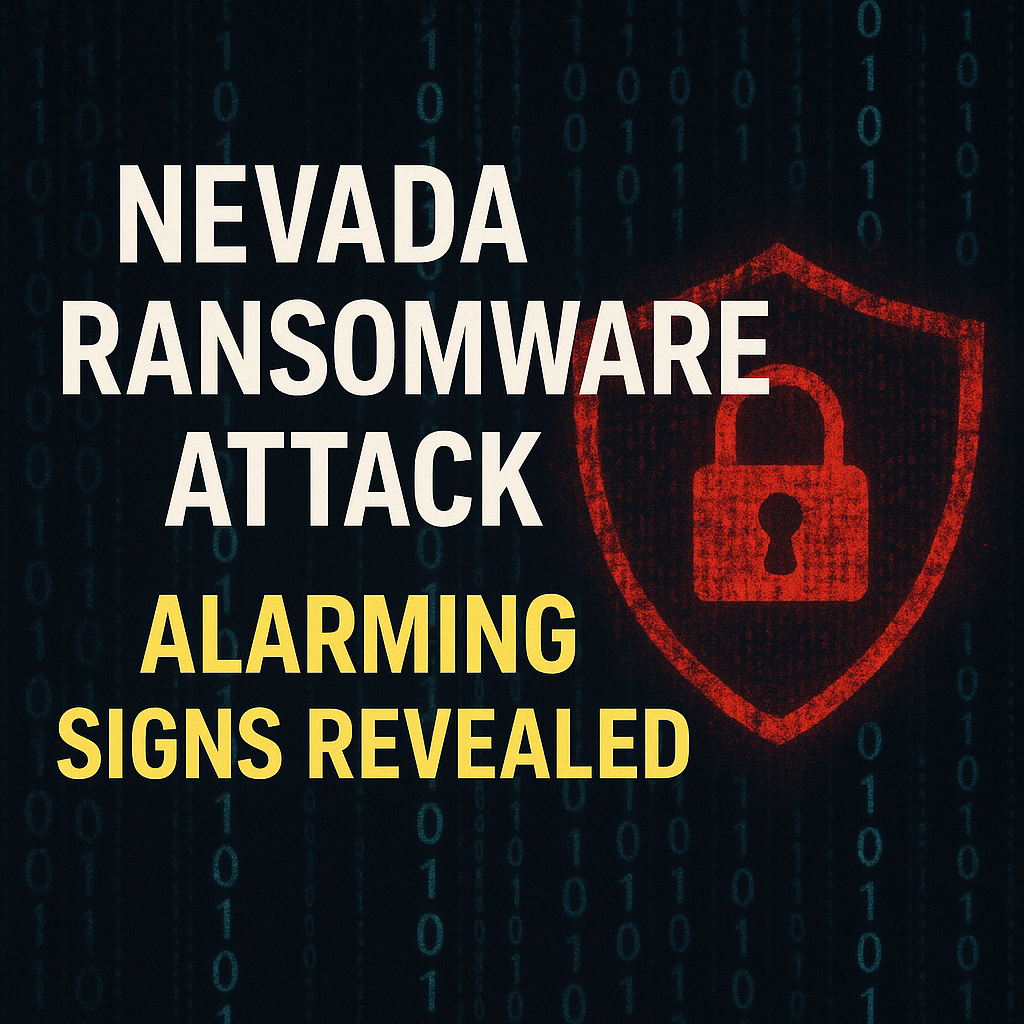Nevada Ransomware Attack: Alarming Signs Revealed
Nevada Ransomware Attack: Alarming Signs Revealed
Nevada ransomware attacks have emerged as a significant issue, raising critical questions about cybersecurity for state agencies and local governments. With the rise in cyber threats, particularly ransomware, understanding the warning signs is more essential than ever. Recent reports indicate that suspicious activities have been detected across various platforms within the state, leading to heightened concerns within government circles and beyond.
Understanding the Attack

The reported symptoms associated with the alleged ransomware attack on Nevada include a sudden halt in several state agency operations and unusually slow internet performance. As outlined by various articles, such disruptions are commonly associated with cyber attacks aimed at encrypting vital data or demanding compromises. For instance, the Las Vegas Review-Journal noted, “Reports indicate that computer systems have been experiencing significant lag, and some services have been momentarily unavailable,” pointing towards a potentially coordinated effort aimed at undermining state functionalities.
Another angle from 8 News Now highlights that several state employees have reported receiving phishing emails, which are often precursors to ransomware attacks. These emails can serve as the gateway for cybercriminals to infiltrate networks, emphasizing that both preventative measures and awareness are crucial to cybersecurity.
The Broader Context
The situation in Nevada is not isolated; it reflects a national trend where various state and local governments are becoming prime targets. According to an analysis from cybersecurity experts, more than 33 U.S. states have reported similar incidents in the past year alone. The implications for public services are dire. What happens if a state is unable to provide essential services due to a cyber attack? From emergency services to public health, the ramifications can reverberate throughout the community.
While some sources emphasize the severity of the situation, others inject caution, noting that while the symptoms align with ransomware attacks, significant investigative steps are still necessary to confirm these initial assessments. As one analyst remarked, “We should be careful not to jump to conclusions before detailed investigations reveal the full scope of the incident.” This kind of balanced reporting is vital as it allows stakeholders to prepare without overreacting.
The Impact on Governance and Accountability
The looming threat of ransomware attacks raises key questions about states’ readiness to confront cyber dangers. Cybersecurity expert reports indicate that many state agencies lack consistent funding and training to effectively address these threats. As one source puts it, “Investment in cybersecurity infrastructure should be non-negotiable for any modern government, especially as the frequency of cyber threats increases.”
Nevada’s incident, if confirmed, could lead to a reevaluation of cybersecurity policies and the establishment of a more robust framework. If local governments do not prioritize cybersecurity, they may unintentionally expose sensitive data, affecting not only government operations but also the personal information of residents. Protecting against such threats should involve:
– Regular Training and Simulations: Government employees must be educated about potential cybersecurity threats and how to respond effectively.
– Investment in Cybersecurity Infrastructure: Resources need to be allocated for technology that can protect sensitive state information.
– Collaboration Across Agencies: Sharing expertise and information between different government entities can streamline response strategies and enhance overall security.
Moving Forward: Preparing for Future Threats
Given the rising trends in cyber vulnerabilities and tangible signs of an escalating threat landscape, it is imperative for Nevada to adopt a proactive approach. This includes not only measures for immediate corrections but also long-term strategies to mitigate risks and ensure the resilience of state operations.
Officials are encouraged to take these early warning signs seriously and act swiftly to conduct formal investigations. The data collected from these occurrences can provide a more informed perspective on how to tackle the ever-evolving nature of cyber threats. Efforts should also be made to engage with federal resources and collaborate on cybersecurity initiatives.
As we watch Nevada navigate this concerning situation, it serves as a stark reminder of the complexities of cybersecurity in modern governance and the importance of remaining vigilant in the face of persistent digital threats. While uncertainties may linger regarding the full extent of the threat, the call for action is unmistakable. Cybersecurity is not just an IT issue; it is a fundamental concern for the integrity of government operations and public trust.






